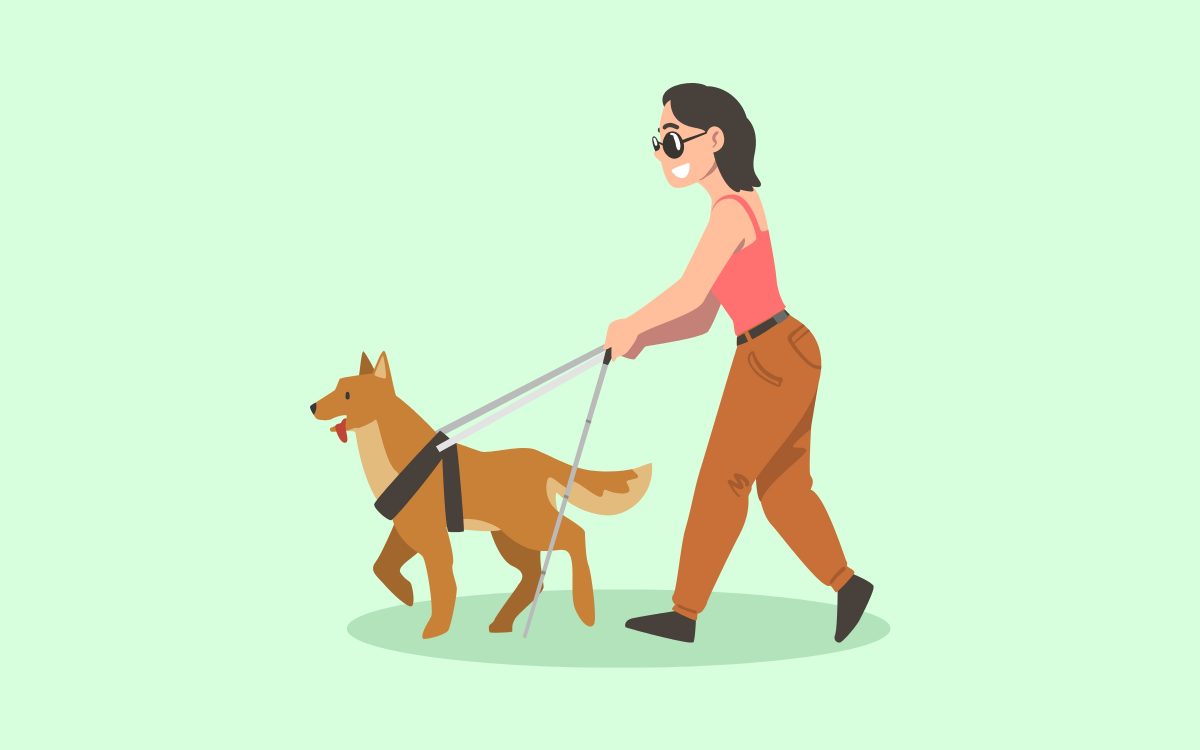We live in such a tough world that sometimes even dogs have to work. Although we have to admit that some are very good workers, such as guide dogs.
Guide dogs are trained to assist people with visual disabilities, from guiding them down the street to helping with household tasks.
These tasks require high levels of concentration, intelligence, and obedience. They cannot just follow basic commands; they have to perform complex actions like opening doors or anticipating possible accidents for their owner when navigating complex architectural areas.
In return, guide dogs enjoy certain privileges that other dogs don’t have. They are the only ones allowed to board public transport or have access to places like restaurants.
This isn’t a modern job either. There are writings confirming that the use of dogs by people with visual impairments dates back hundreds of years. For example, Saint Francis of Assisi already referred to a blind person guided by a dog. That’s 800 years ago.
Although, if we look at the first recognized guide dog training centers, we must go back to more recent times. It’s accepted that the first ones appeared in Germany during World War I.
But not all dogs are suitable.
Guide dogs belong to specific breeds because their work requires certain physical and temperamental qualities. In this article, we’ll explain which breeds are most common for guide dogs and what tasks a guide dog performs in their daily life.
Which Breeds Are Guide Dogs?
Guide dogs must have a specific temperament. They need a balanced character and strong temperament. They must remain calm in stressful situations and make quick decisions.
Despite what it may seem, they are as playful and affectionate as any other dog. But the service harness changes their mentality; they are capable of distinguishing leisure time from work time.
One condition of these breeds is their ability to wear the harness, which requires a minimum size. Guide dogs should stand between 55 and 60 centimeters at the withers, which is the measurement from the ground to the top of the dog’s shoulders.
The most common breeds are:
– Labrador Retriever and Golden Retriever. They are probably the two best-known breeds in this role. They are affectionate and intelligent dogs that are not afraid of work. Fun fact: the cross between Labrador and Golden is likely the most commonly used guide dog today.
– German Shepherd. It’s considered the first guide dog breed, as the first training schools appeared in Germany. This, combined with the breed’s great mental and physical capacity, makes them ideal. An intelligent dog that had been used for years in rescue and combat tasks.
Other breeds used include Poodle (which is also seen in many crosses), Border Collie, Australian Shepherd, Doberman, and Boxer.
However, as long as the dog meets the requirements of temperament and size, any dog, purebred or mixed, can be trained as a guide dog. If you managed to find a large enough and calm enough Chihuahua, it could serve as well.
As long as it passes the training.
How Are Guide Dogs Trained?
Training a guide dog is long and requires patience. Typically, a guide dog is not assigned to its owner until it is about two years old. The process starts with character tests, followed by a socialization period, before moving on to more intensive training with professional trainers.
Once training is complete, the dog is paired with its owner. Have you seen the selection of wands and wizards in Harry Potter? This is similar.
Not just any dog is assigned to any person. A chemistry between them is studied to ensure they will work well together. The first month, the instructor continues to monitor the dog to evaluate their interactions.
Even then, the training doesn’t end. The very job of a guide dog is a constant training process, until they retire. Retirement, under normal conditions, happens between 8 and 12 years of age.
What Tasks Does a Guide Dog Perform?
Guide dogs have an essential job. Not only do they guide people, but they are also trained to avoid accidents, detect obstacles in the path, and, in some cases, even open doors or anticipate dangers.
Additionally, they are trained to perform what is called “intelligent disobedience,” meaning they will disobey certain commands if they perceive that following them could put their owner in danger.
An example of “intelligent disobedience” occurs when a person wants to cross a crosswalk, but the dog perceives traffic and puts them at risk.
As we mentioned earlier, they are focused dogs that do not get distracted during their work. This also applies to their behavior. Although guide dogs can access places where other dogs cannot, they must behave properly. They cannot bark, be restless, or disturb others around them.
They learn voice commands. Some are simple, like going faster or slower, sitting, and lying down.
Others are more specialized. A well-trained guide dog will know when their owner indicates they are going to the store, returning home, or even when they need to alert the doctor.
That’s why training is constant. Your dog may not need to issue an emergency alert for years, but when it’s needed, it will be ESSENTIAL.
There are easier human jobs than being a guide dog.
If you are curious about your dog, whether or not it’s a hard-working guide dog, we recommend the DNA test for dogs by Koko Genetics. Discover more about its breeds, temperament, and possible genetic predispositions for specialized tasks. You might even have a future guide dog at home!
